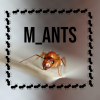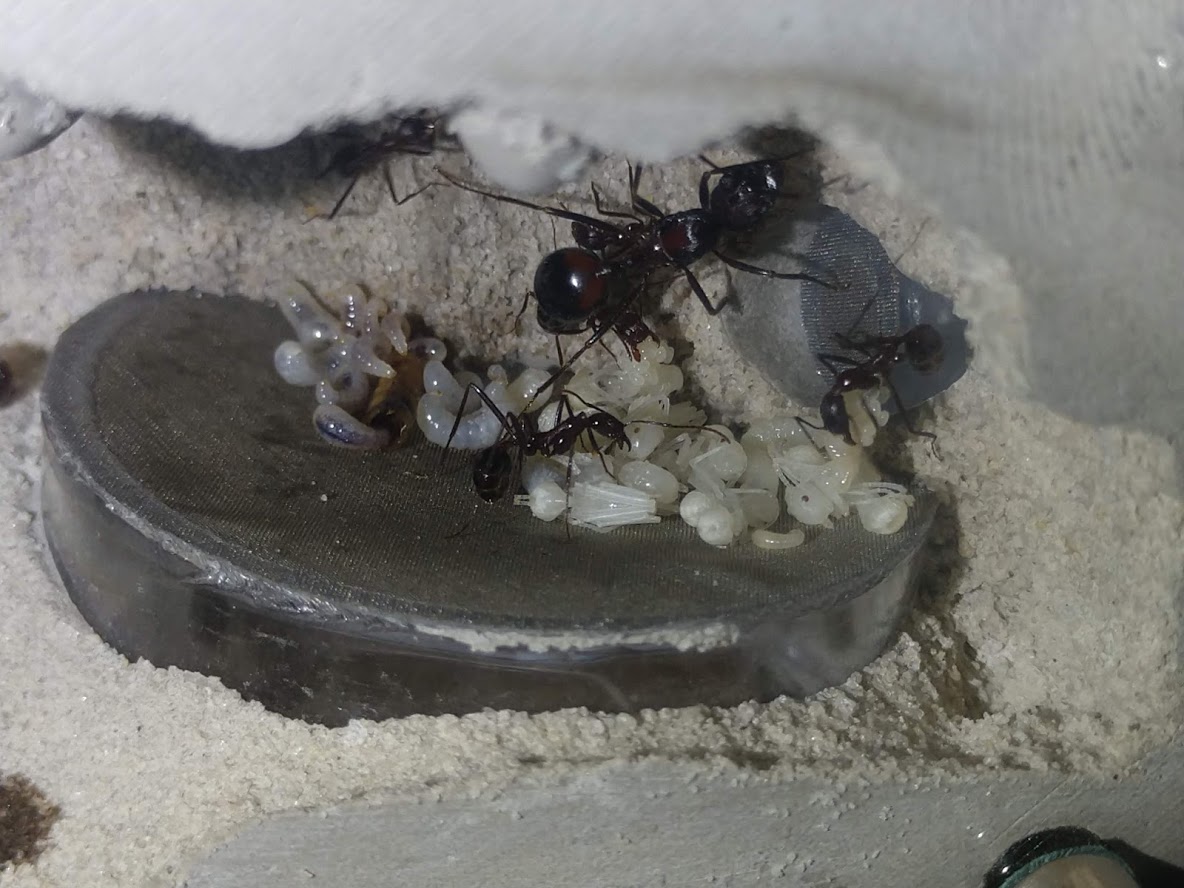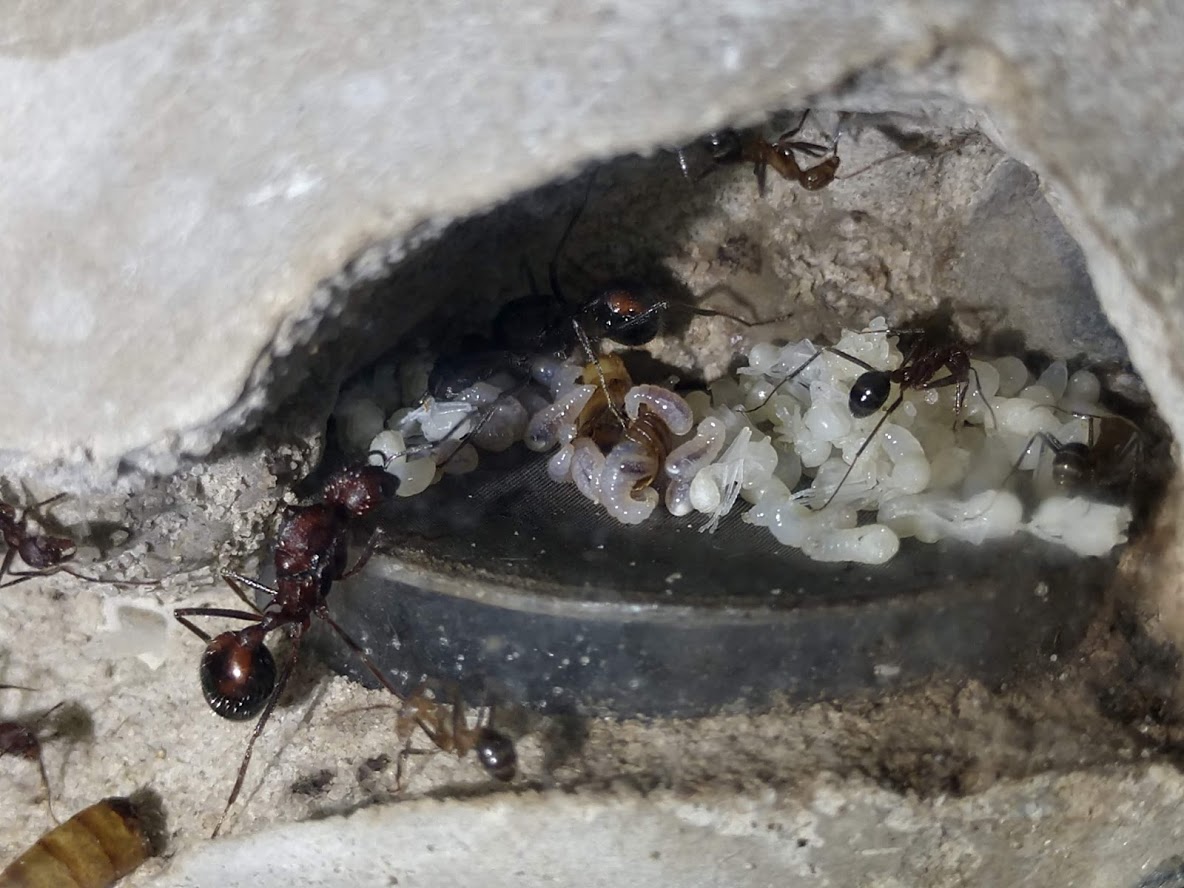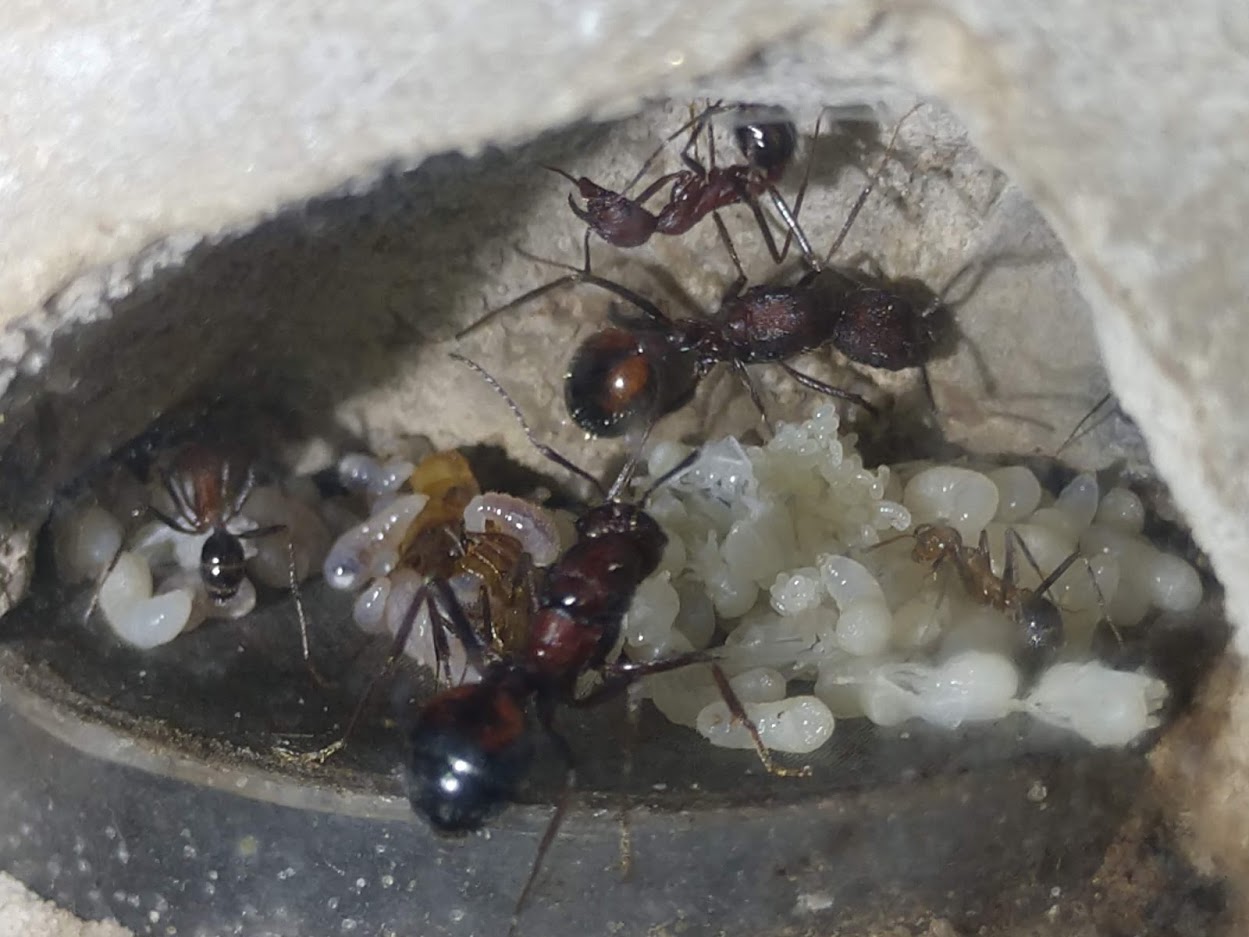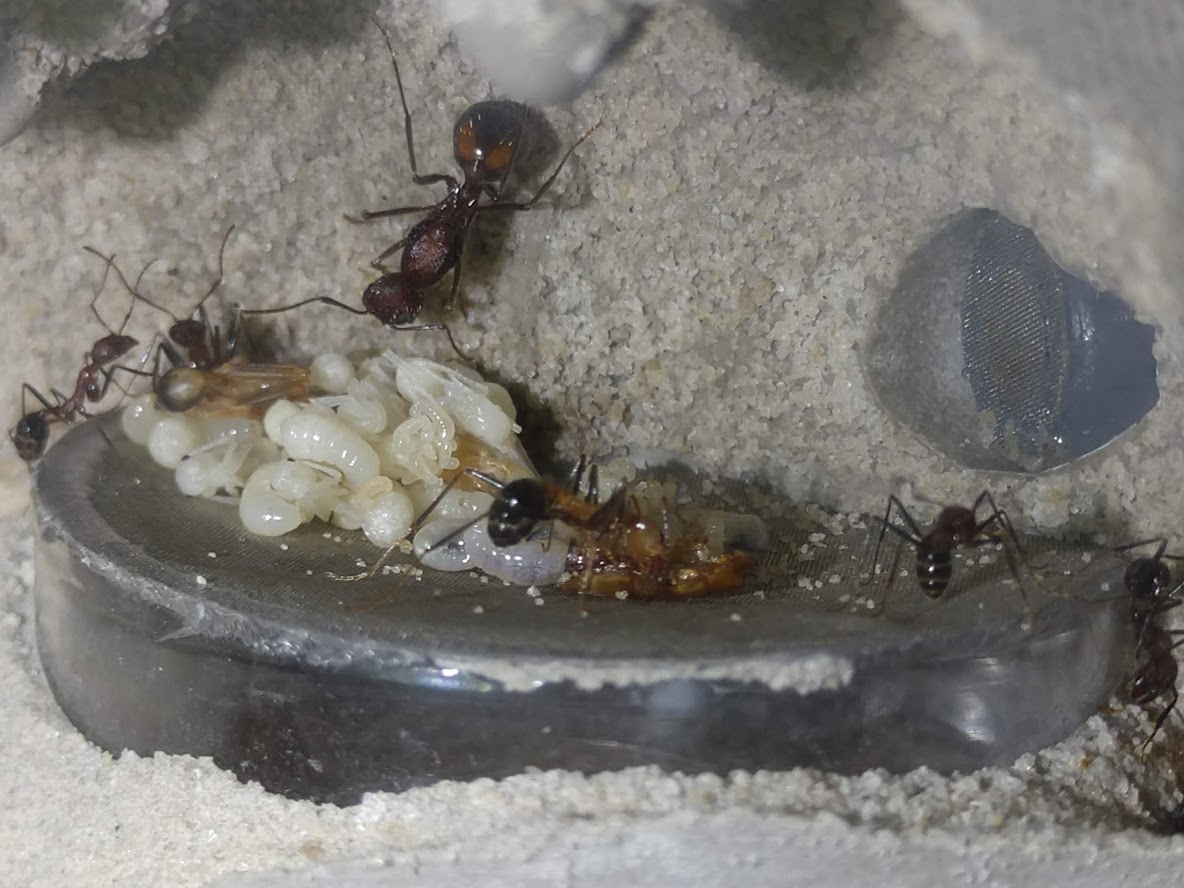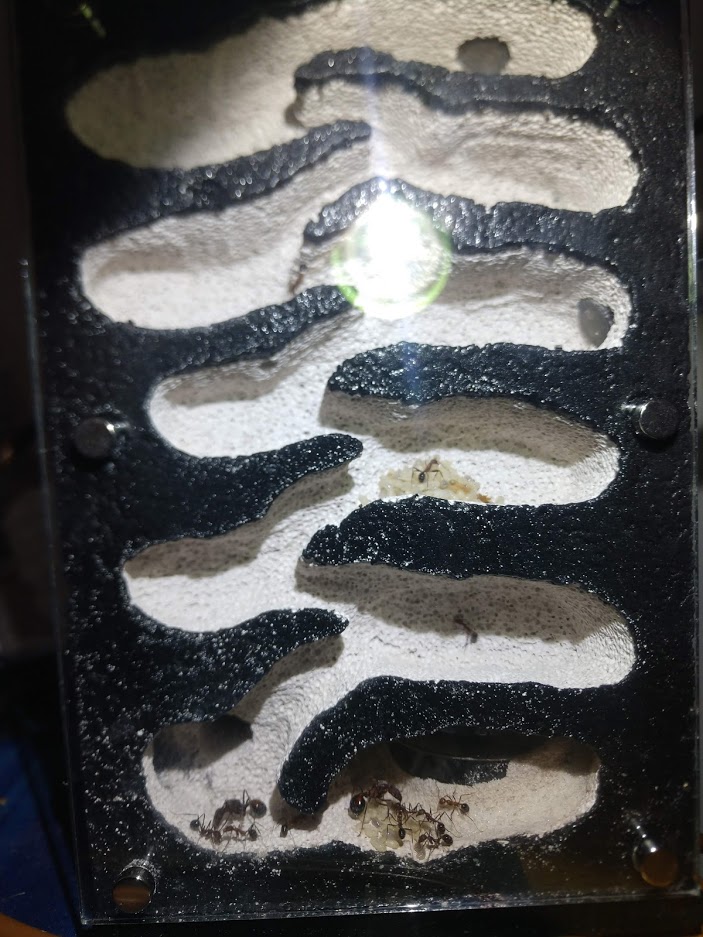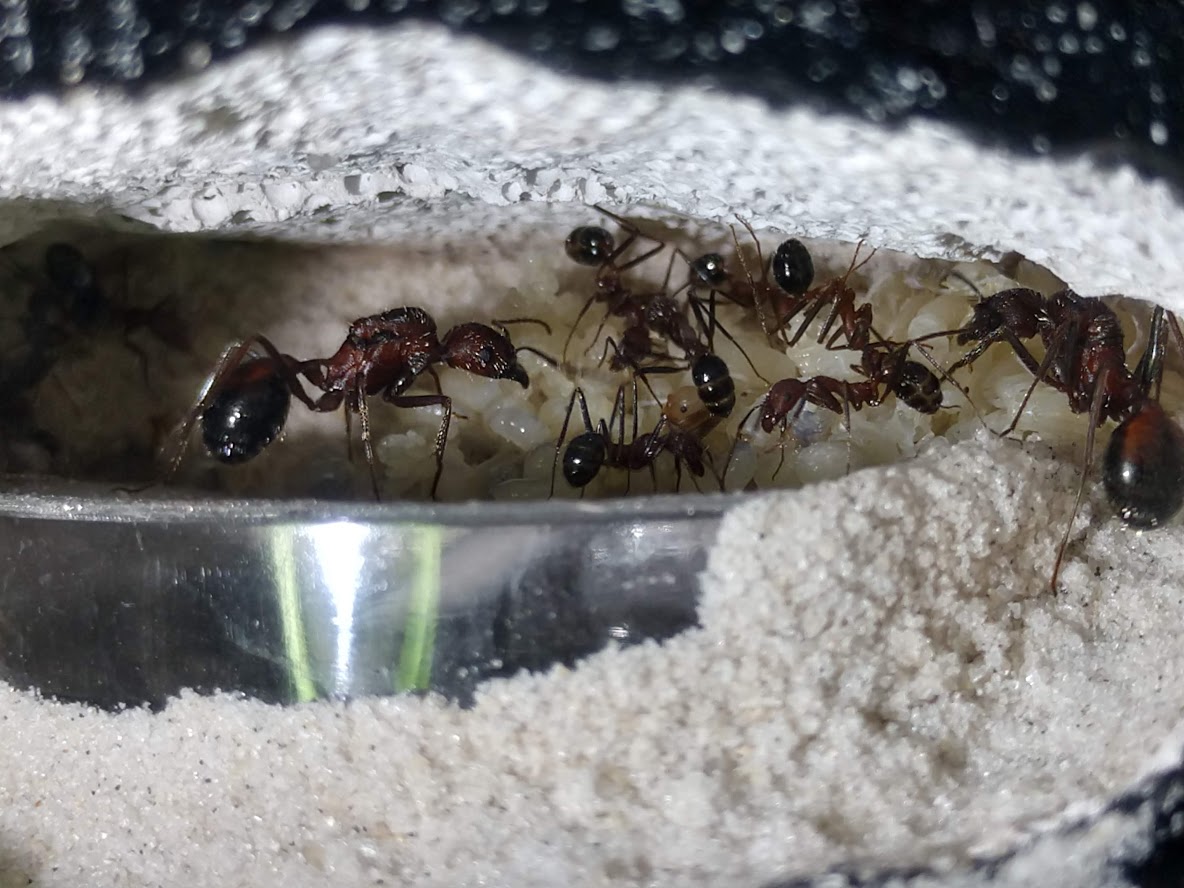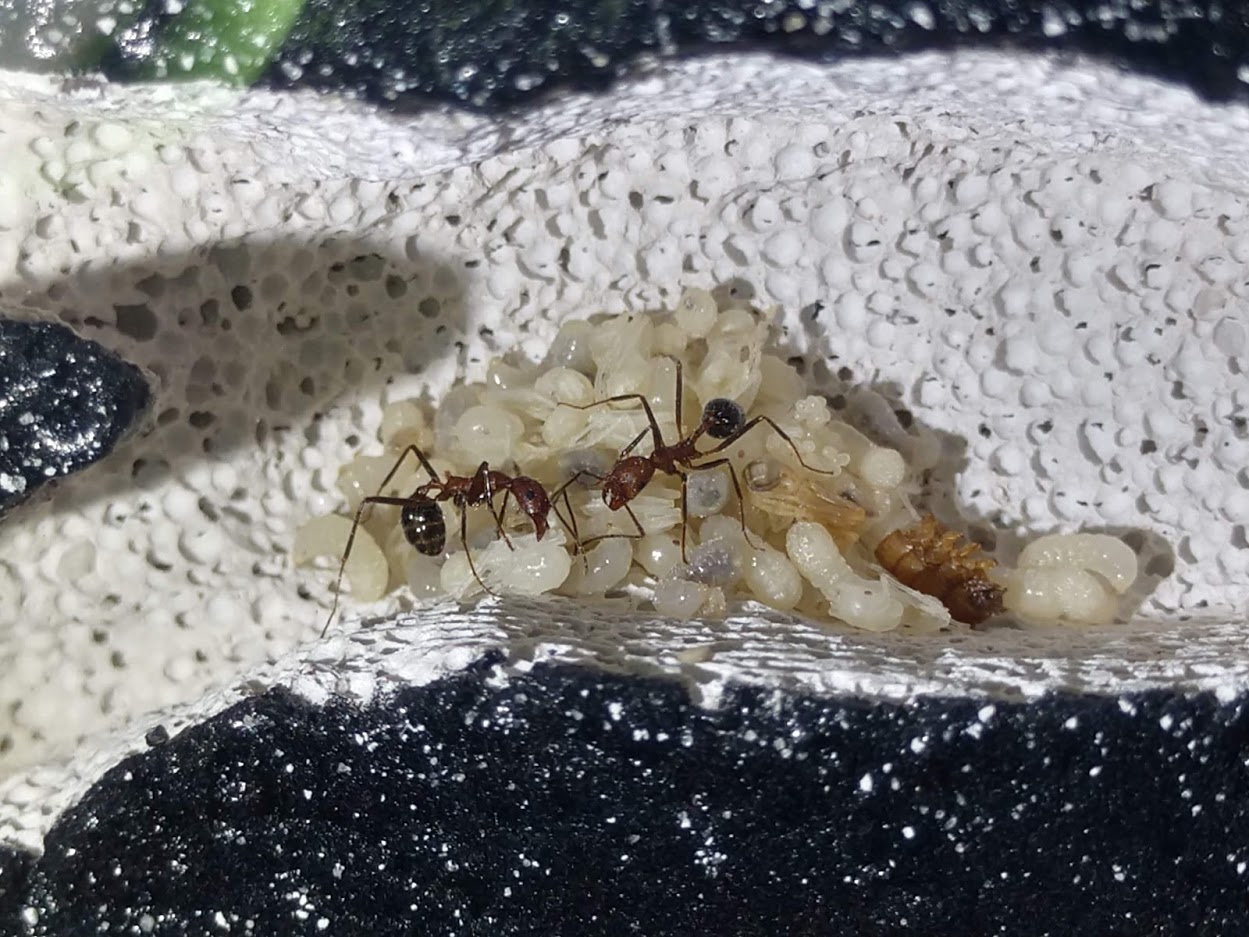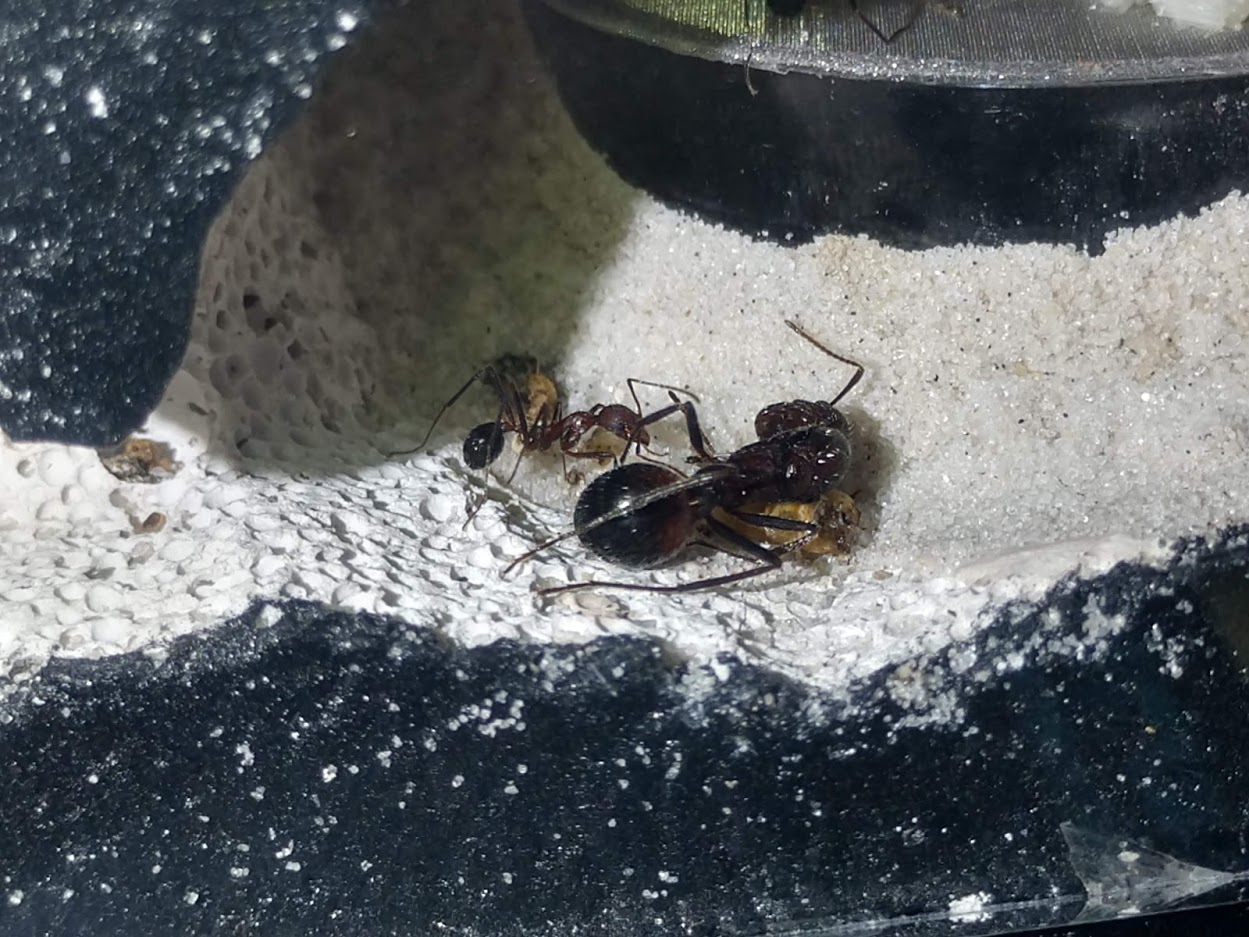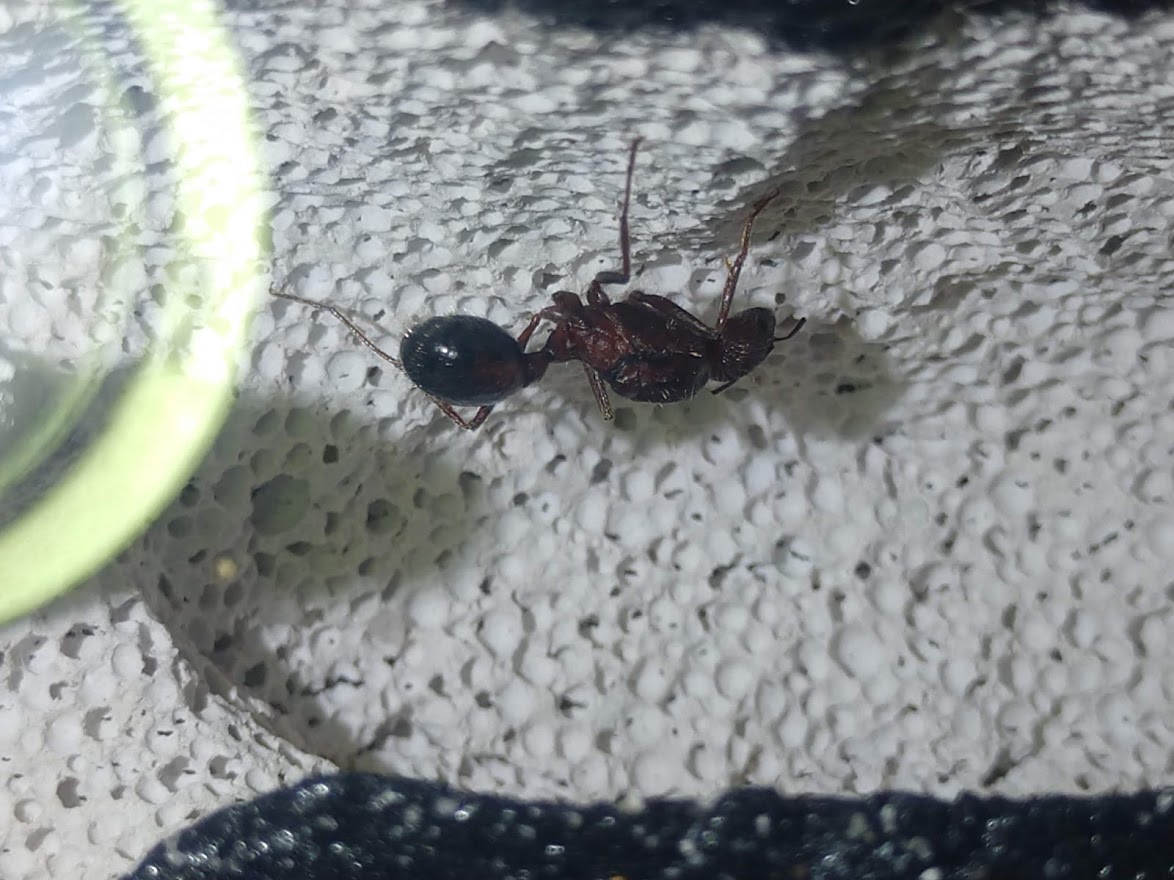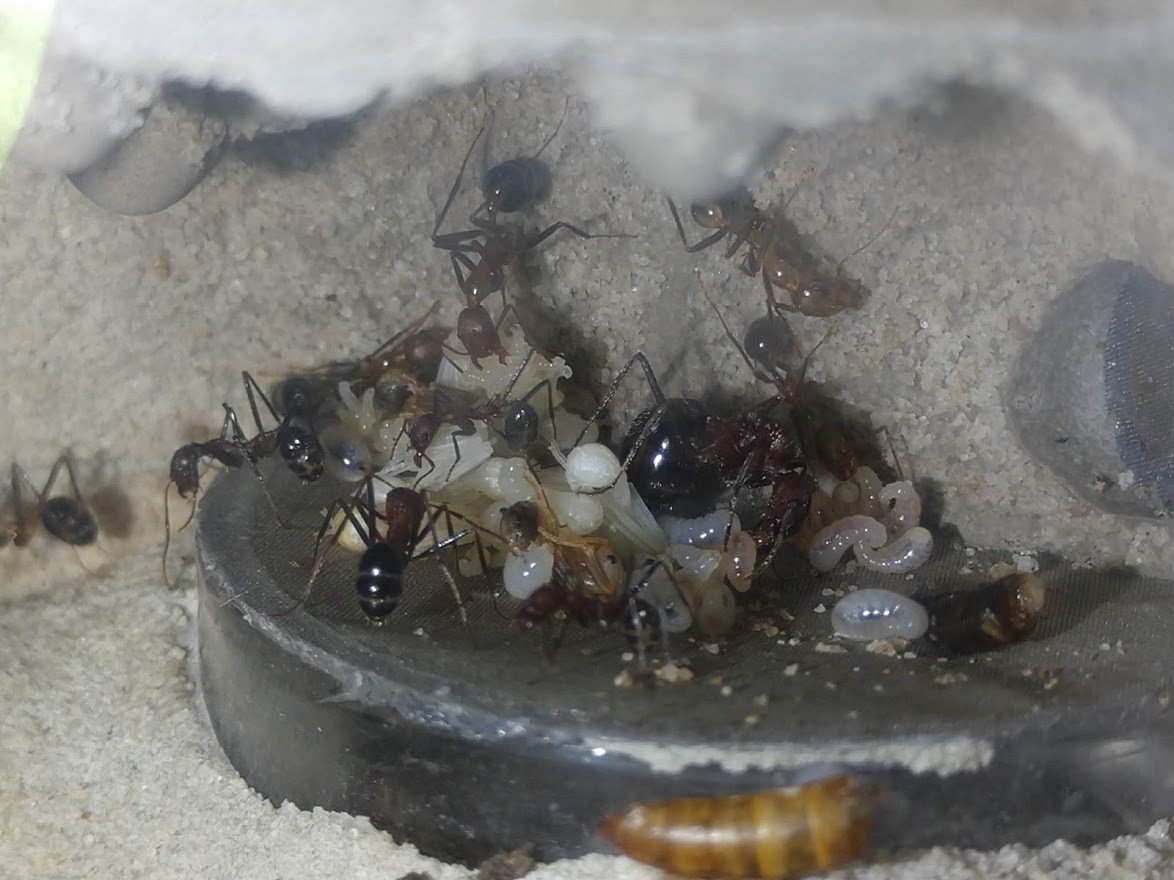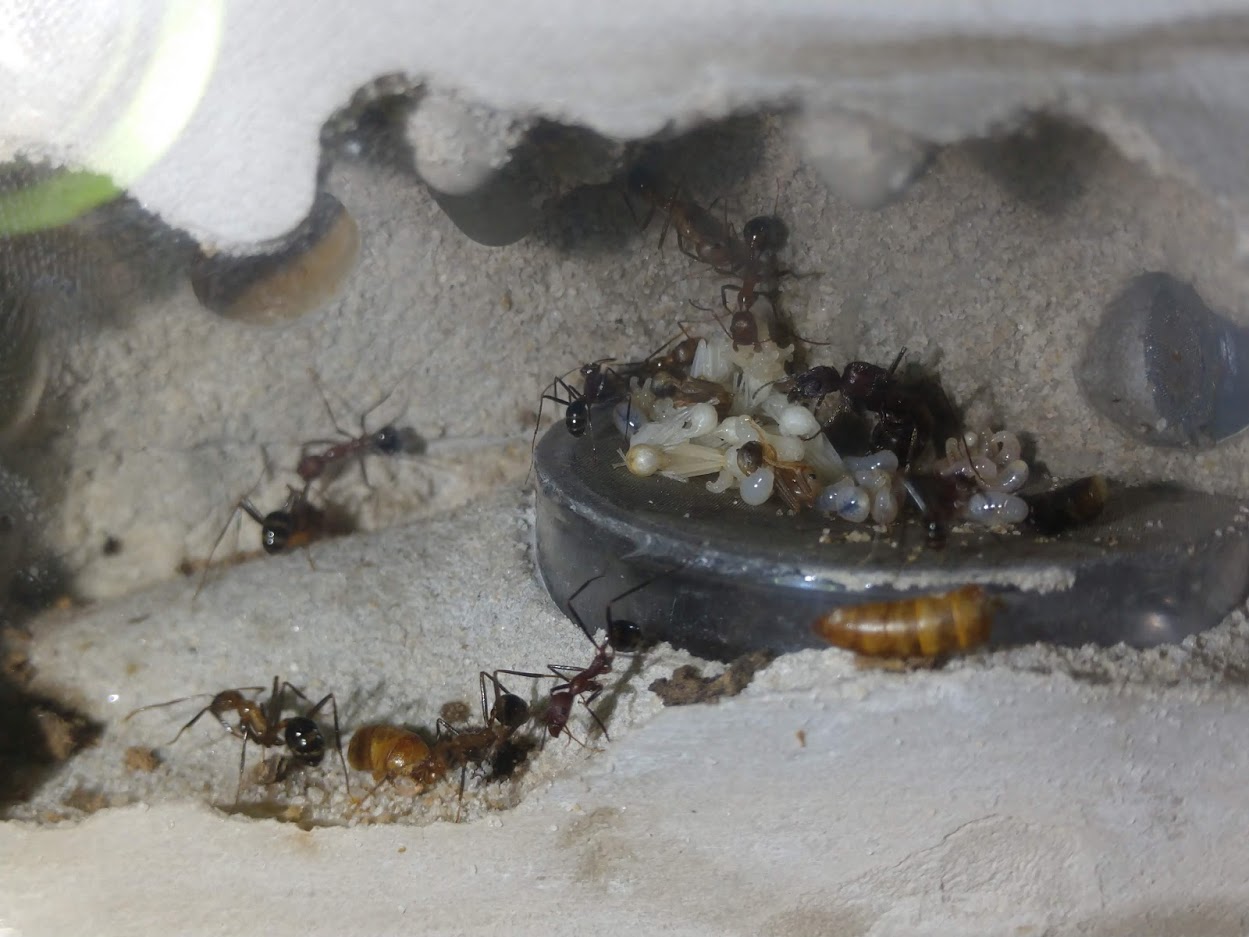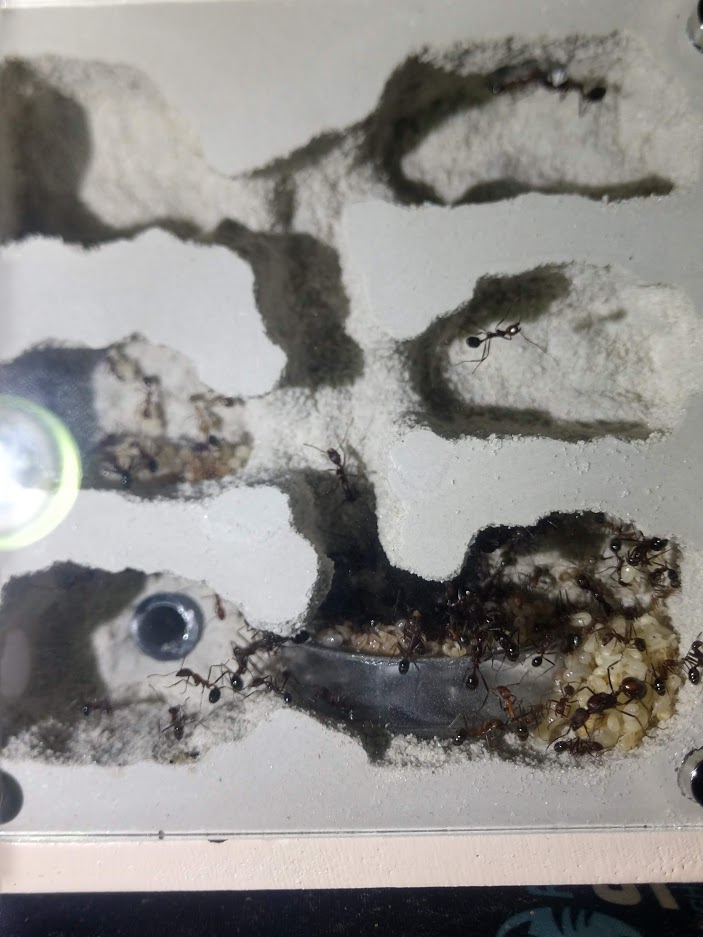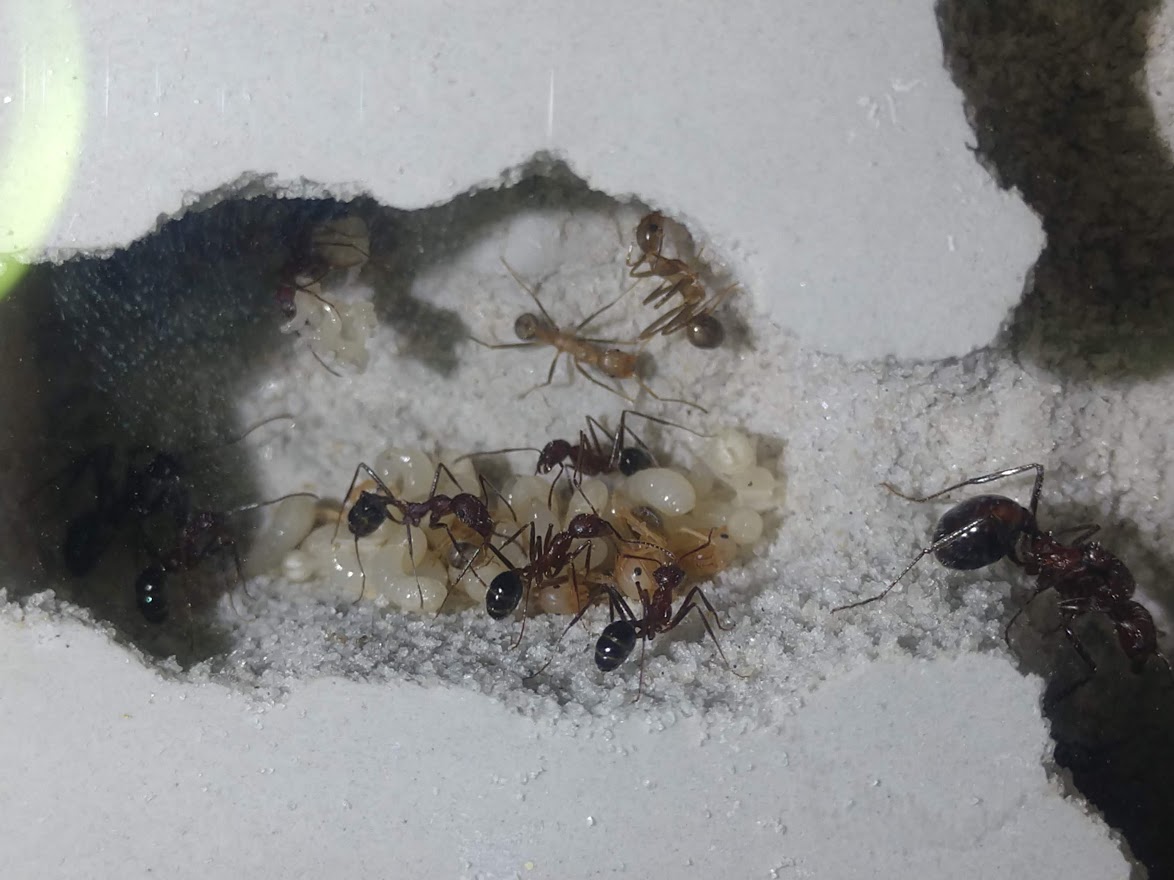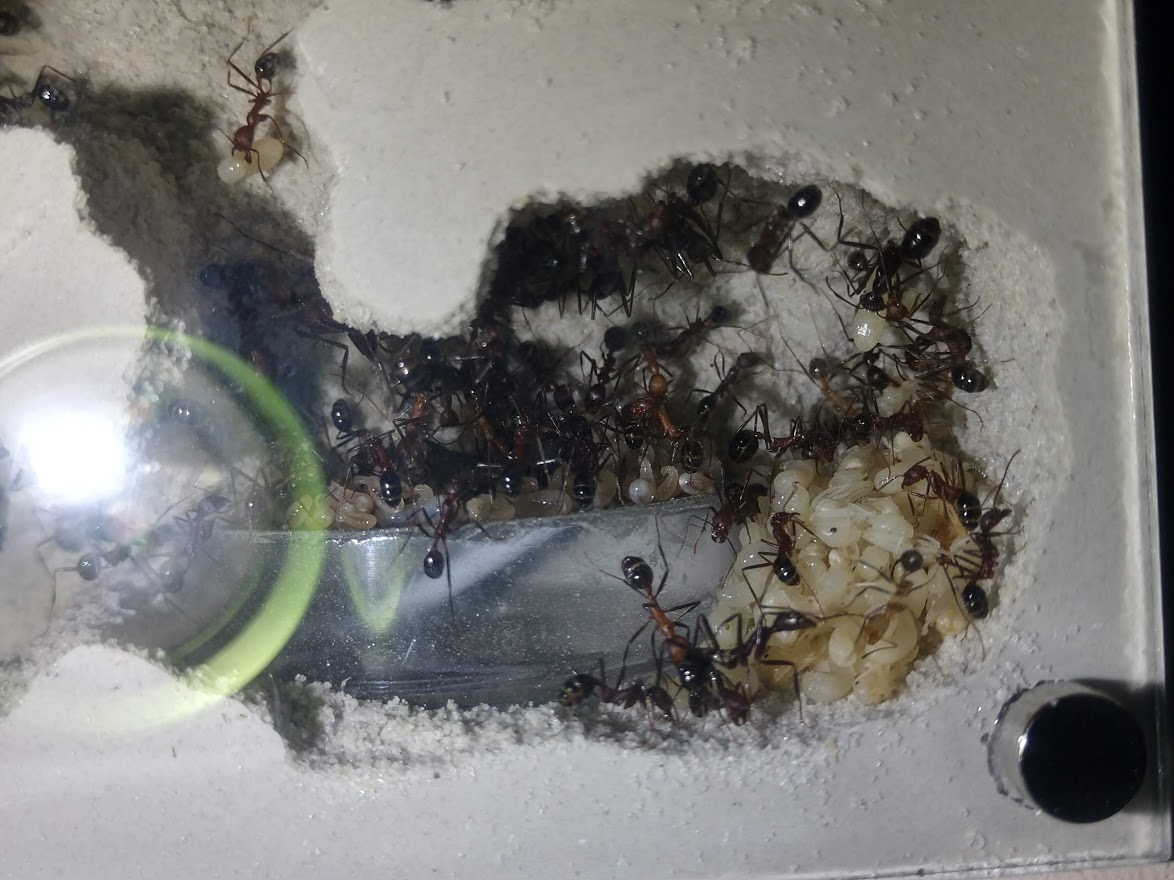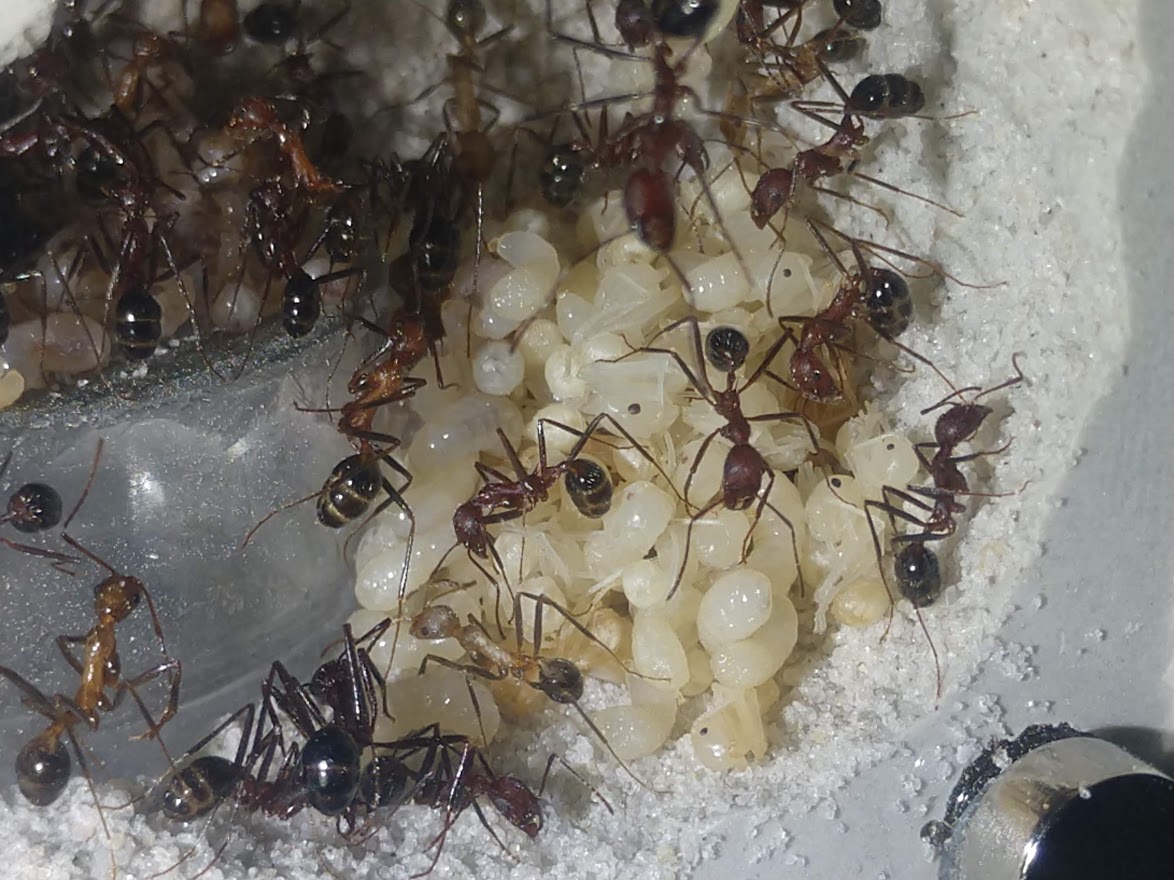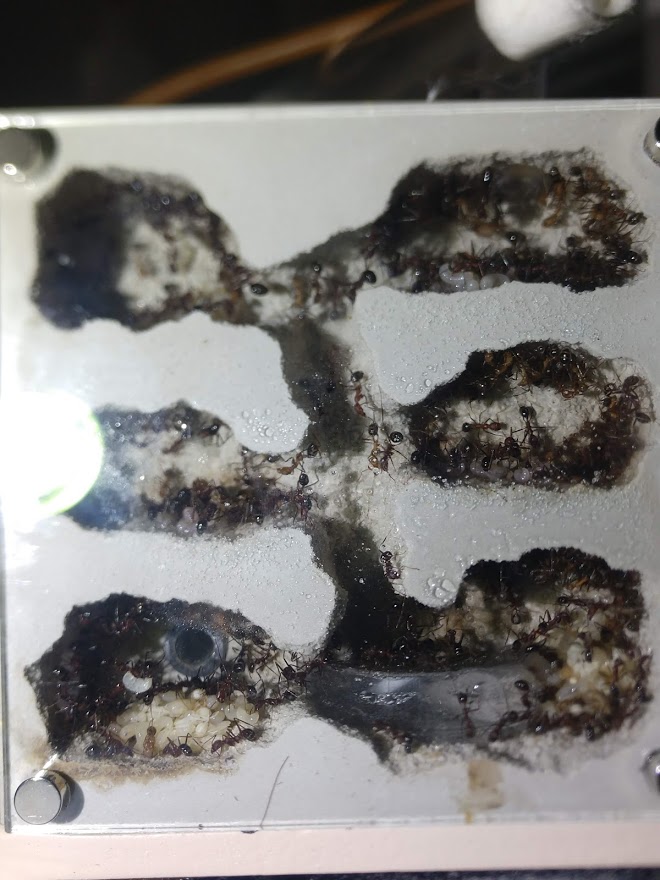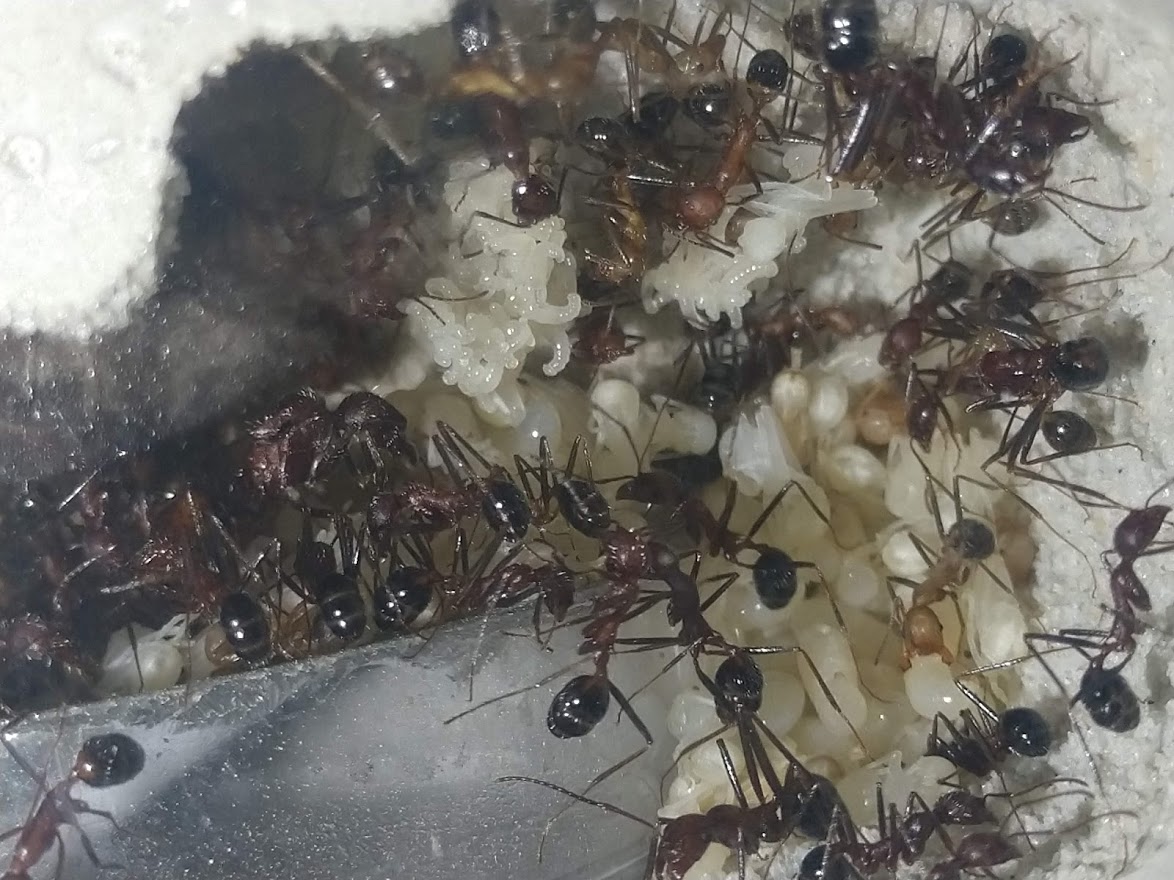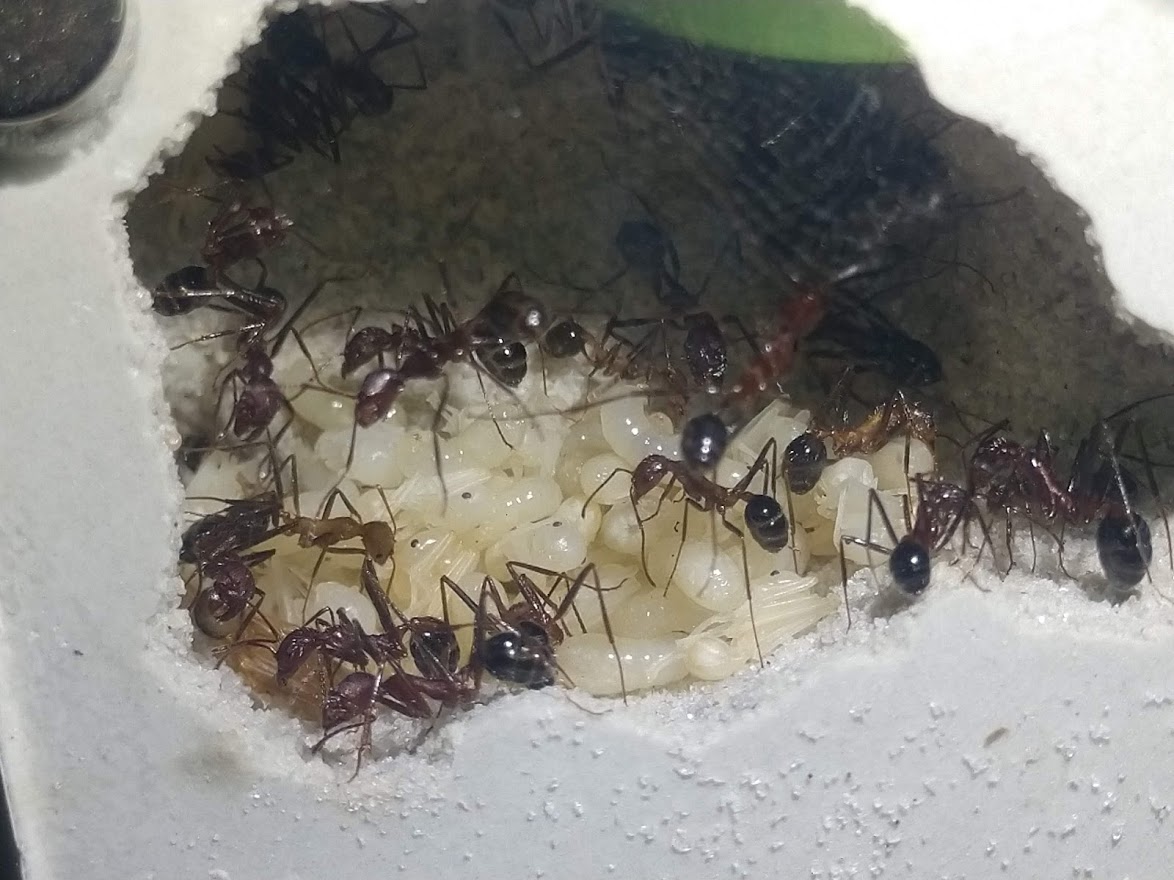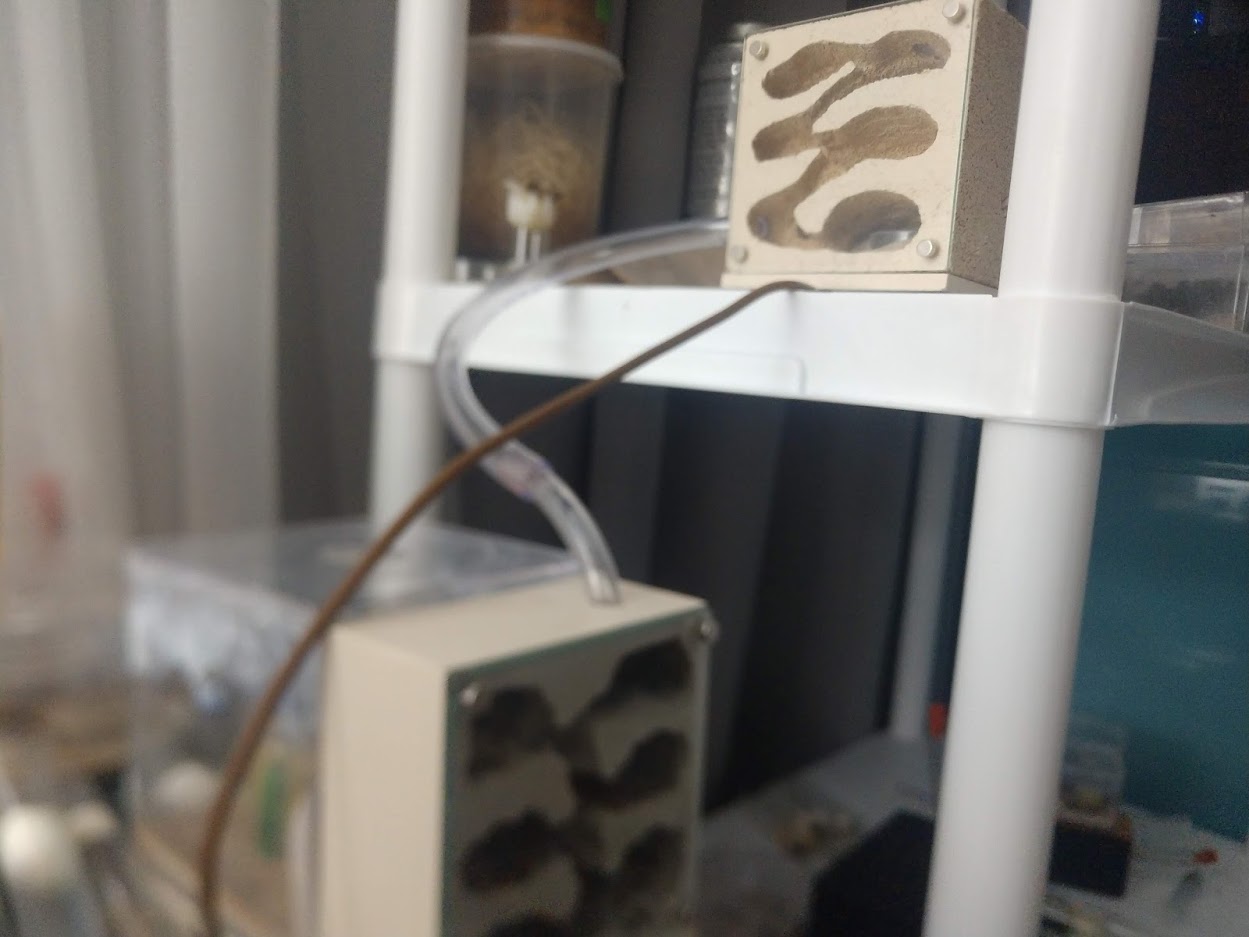I honestly wasn't really planning on making another journal, but these two colonies have been absolutely blowing me out of the water. I love Novomessor, so finally getting some successful colonies is so great! I've had them in the past, but they never did well for me. This time is a completely different story.
Novomessor cockerelli
This queen was caught on August 3rd, in Tucson AZ. I only have like one really terrible picture of her during founding, so I'll spare your eyes for now. She got her first nanitic on September 8th, putting their egg to worker at around 5 weeks. Insanely fast for ants as big as them. Once all four of her nanitics eclosed, I moved the colony into a Tarheel Ants Mini Hearth. I had heard that Novomessor do exceedingly well in those formicaria, so I decided to give it a shot. Well, the rumors are true. As soon as I put them in the nest they absolutely took off. As of right now their second generation is in their late development, with one pupa close to eclosing and the rest of the generation being either larvae in premolt or pupae. Their 2nd generation will total up to 12 new workers, meaning the colony will quadruple in size in just one new generation. I feed them one mealworm every day, and keep a heat cable underneath the nest to keep things hot. I've learned this genus absolutely needs heat above all else. Check out the massive brood pile! Crazy to think a colony with only nanitics can raise that much brood.
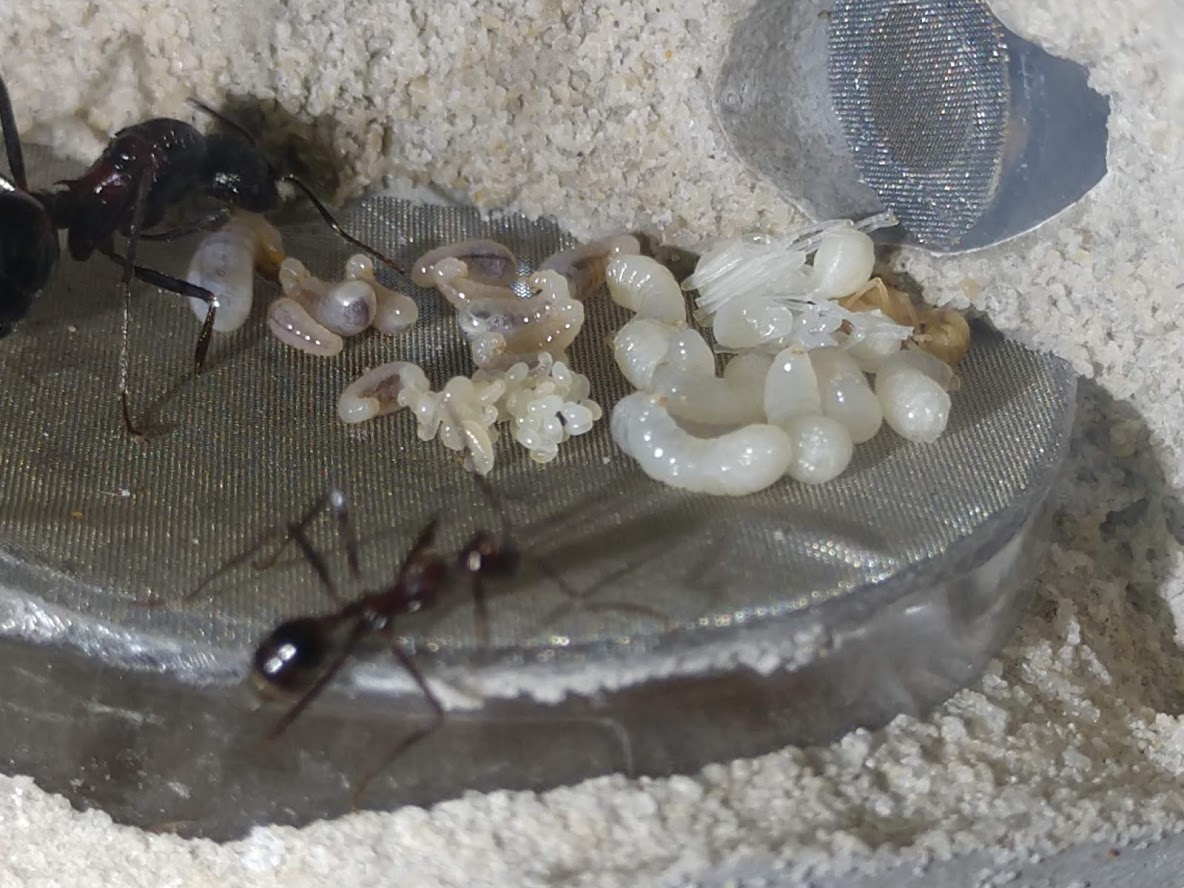
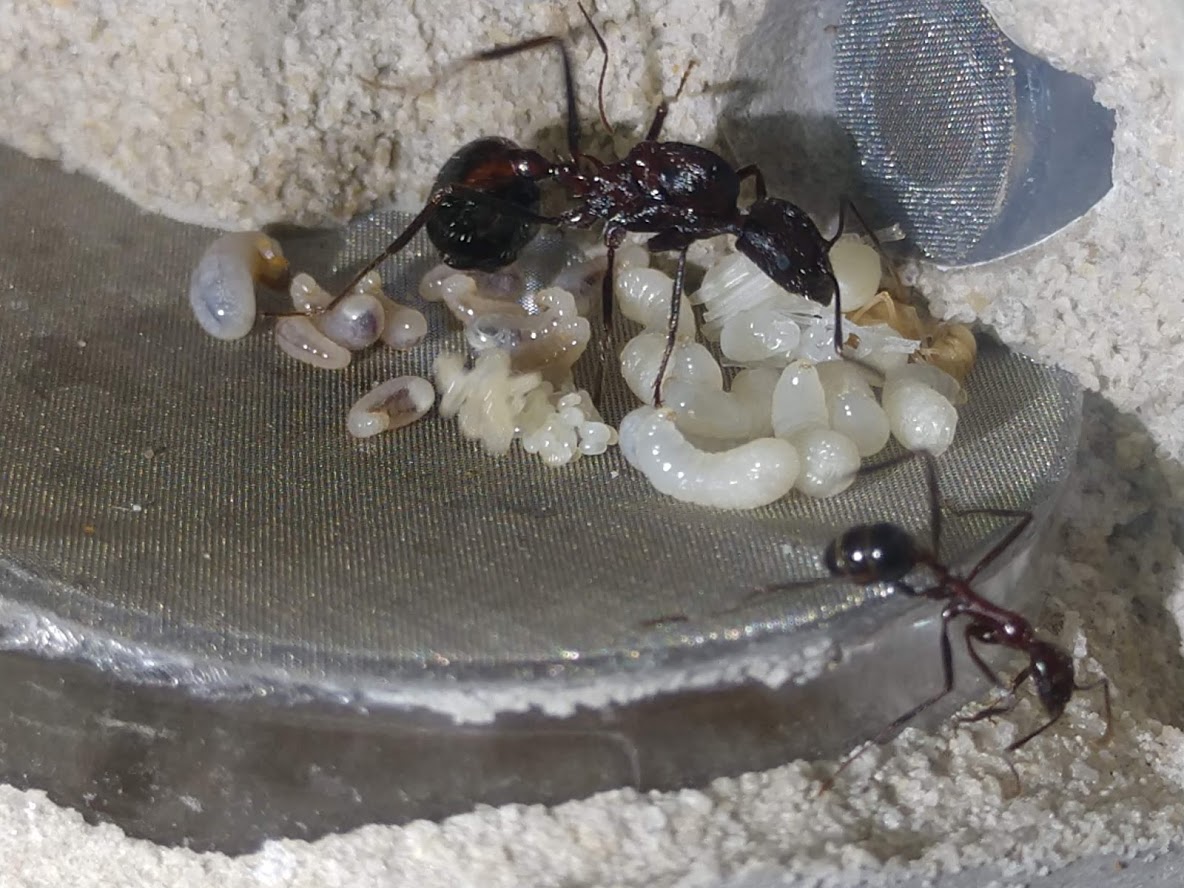
Novomessor albisetosus
Caught on the same day as the cockerelli above, this colony has one key quirk: 2 queens! N. albisetosus are polygynous, so I quickly scanned all of the Novomessor queens I'd caught that day to check for differences in the propodeal spines; the only surefire way to differentiate cockerelli and albisetosus. Only these two ended up being albisetosus, so I quickly tubed them together and left them to found. They took a bit longer than the cockerelli, getting their first worker on September 12th. They would get 6 nanitics total, and then I moved them into a Mini Hearth on the same day as the cockerelli. This colony got their 2nd generation far quicker, but it was only an additional 4 workers. Their next few generations are a totally different story, though, as the laying power of two queens is definitely no joke! I feed them usually 1-2 mealworms a day, depending on how much they'll take, and their setup is pretty much identical to the cockerelli's.
One key thing I'd like to note is that they're in a 2-segmented Mini Hearth, which you'll see later. The reason for this is that the queens actually don't really like each other. Despite founding together and everything, they won't come into contact at all. Whenever they see each other they quickly repel in the opposite direction. Despite this, the workers actively care for both, and there are no signs of actual aggression within the colony at all. This behavior makes me think that perhaps they are oligynous instead of truly polygynous. Just food for thought.
Either way, here's some pics of them from today. Check out all that brood!
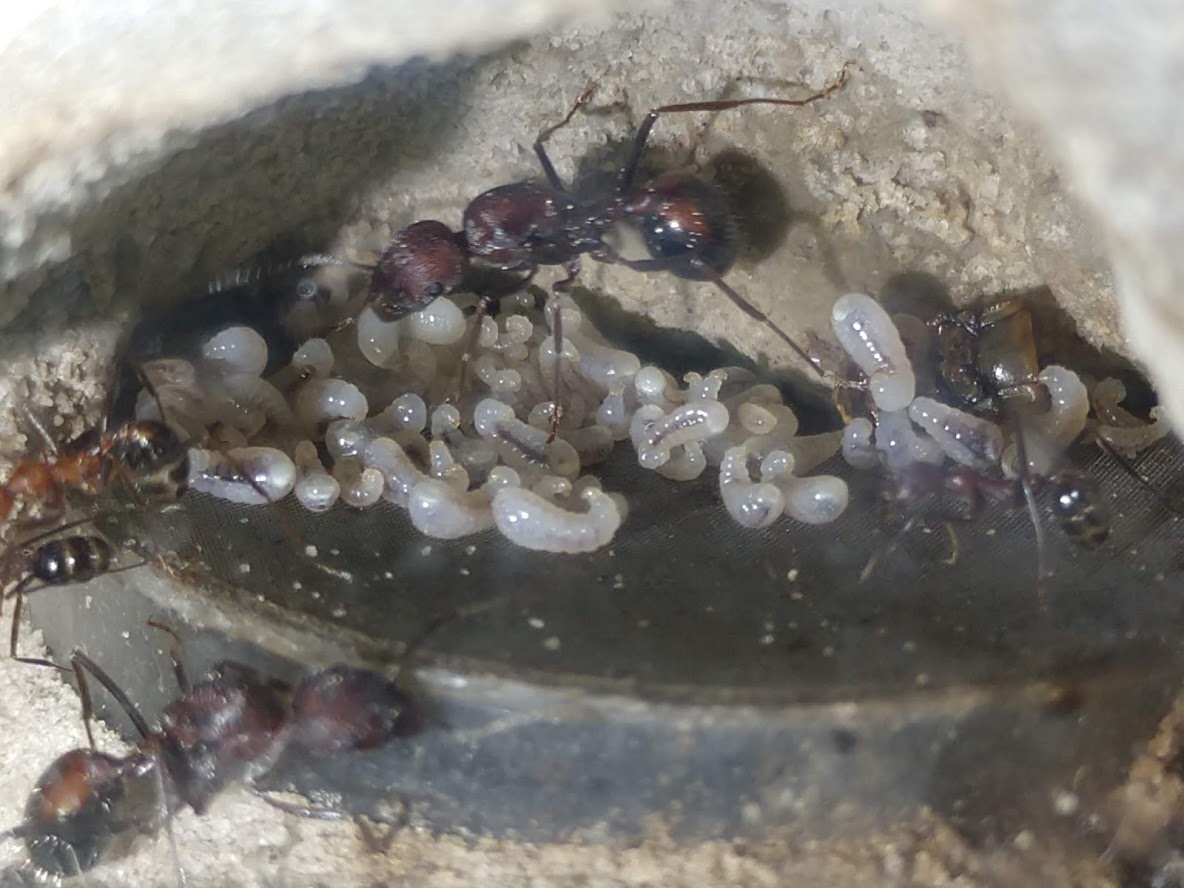
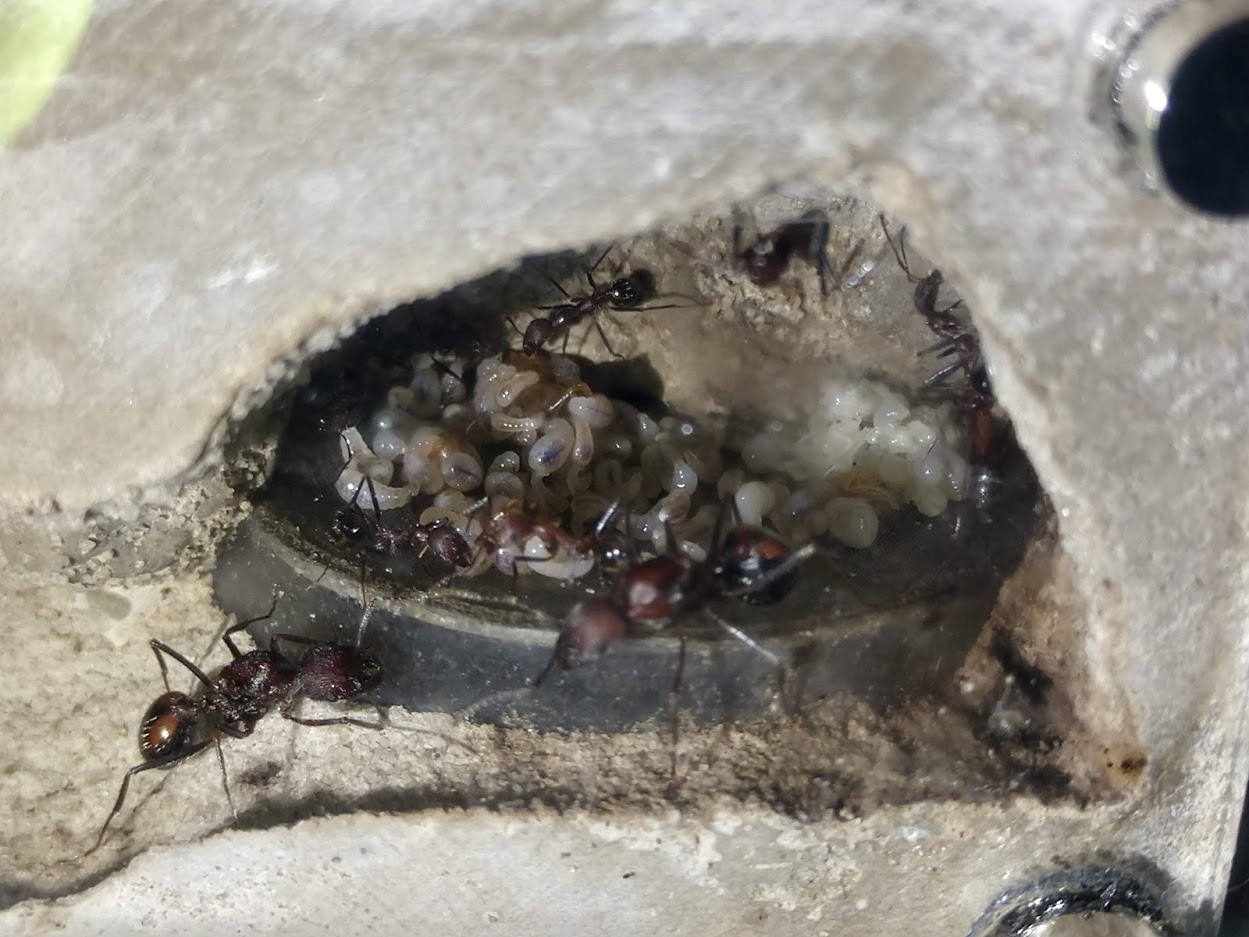
To wrap things up, here's a few recent videos I've done on these guys. The 2nd one even catches one of the albisetosus queens laying an egg!
Edited by CheetoLord02, February 7 2021 - 10:57 PM.






